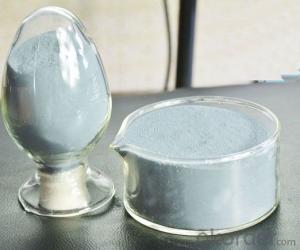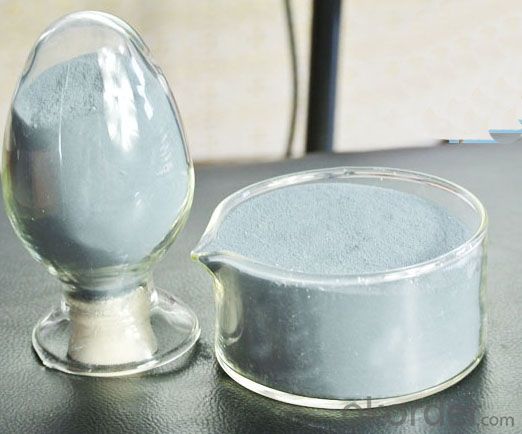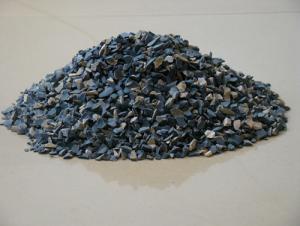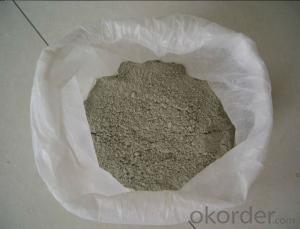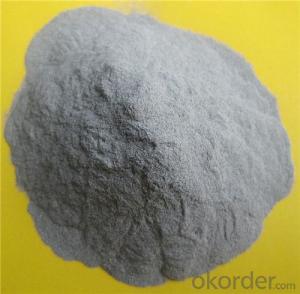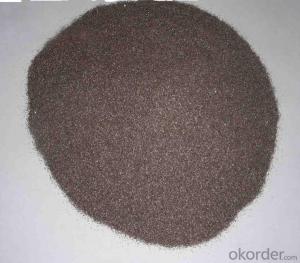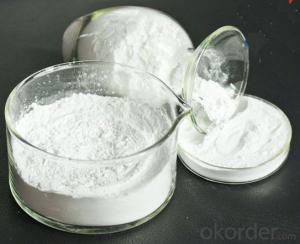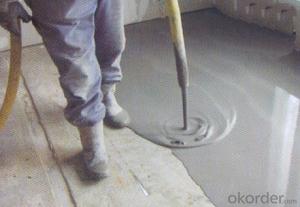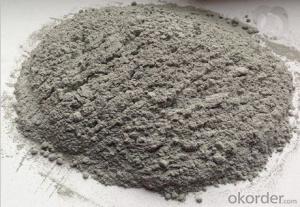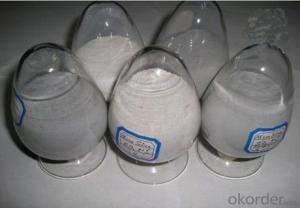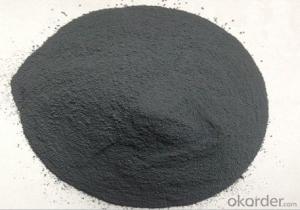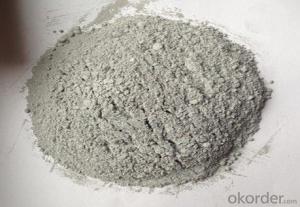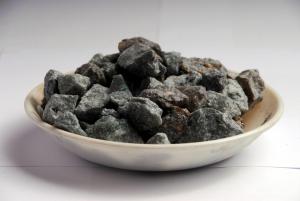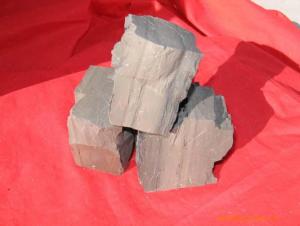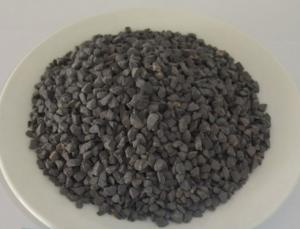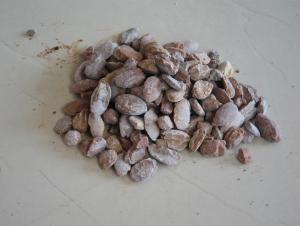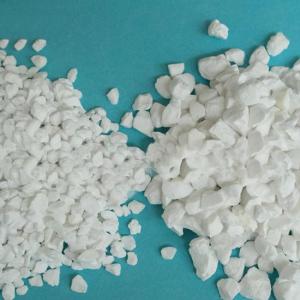Raw Materials for Refractory - Silicon Fume Product
- Loading Port:
- Tianjin
- Payment Terms:
- TT OR LC
- Min Order Qty:
- 20 m.t.
- Supply Capability:
- 5000 m.t./month
OKorder Service Pledge
OKorder Financial Service
You Might Also Like
CMAX Brand Silica fume is a byproduct of producing silicon metal or ferrosilicon alloys.It consists primarily of amorphous silicon dioxide (SiO2),its average granule diameter is 0.15~0.20 µm,specific surface area is 15000~20000 m2/kg.
1. Very low permeability to chloride and water intrusion.
2. Extremely high electrical resistivity.
3. Increased abrasion resistance on floors,highways,marin structures.
4. Superior resistance to chemical attack from chlorides,acids,sulfates.
Grey Densified and undensified Silica fume for cement
Analysis | Result | |||||||
SF85 | SF88 | SF90 | SF92 | SF94 | SF96 | SF97 | SF98 | |
SiO2(%)(min.) | 85.05 | 88.05 | 99.05 | 92.05 | 94.05 | 96.05 | 97.5 | 98.5 |
Fe2O3 (%) | 0.78 | 0.44 | 0.21 | 0.25 | 0.20 | 0.20 | 0.10 | 0.20 |
Al2O3 (%) | 0.29 | 0.20 | 0.21 | 0.25 | 0.20 | 0.20 | 0.20 | 0.20 |
CaO (%) | 0.39 | 0.30 | 0.36 | 0.30 | 0.30 | 0.30 | 0.30 | 0.30 |
K2O+ Na2O (%) | 0.29 | 0.24 | 0.22 | 0.20 | 0.20 | 0.20 | 0.20 | 0.20 |
Moisture (%) | 3.05 | 2.55 | 2.05 | 2.05 | 1.85 | 1.25 | 1.00 | 1.00 |
Loss on Ignition (L.O.I) @975OC (%) | ||||||||
- Q: what's the varieties of fire-proof?sealing?material?
- Fire blocking material currently on the market include: fire stopping board, foam blocking material, flame resisting module, fire-resisting sealant, flexible organic caulking, WXY-II and fire retardant bag, etc. fire-proof?sealing?material is widely used in building construction and can ensure high-temperature flame and smoke from fires not spread to another fire?compartment, different buildings generally use different sealing methods. Pipeline is generaly sealed by pouring concrete board or mortar.
- Q: Physical and chemical indicators of various refractory.
- it depends on what it is for. There are thousands of kinds of refracroties. You should just ask what you need.
- Q: What's the requirements of fire-fighting criteria of heat insulating material?
- It shouldn't be under than B2 level. Roofing insulation fire rating requirements: the ministry of public security, housing and urban-rural development department issued about printing and distributing the civil building external thermal insulation system and the interim provisions on the exterior wall decorative fireproof prescribed in the notice: roof grassroots adopted duration of fire resistance is the non-combustible component that shouldn't less than 1.00 h's. Its roof insulation materials should not be below B2; Otherwise, the combustion performance of insulating material should not be below the B1 level. The junction of the roof and wall, the insulation layer around the opening part of roof should use the grade A thermal insulation material to set level fire-fighting belt that width is not less than 500 mm.
- Q: What material is refractory material?
- alumina refractory concrete, silica brick clay brick, metal ceramic, high temperature machine coating fiber reinforced ceramics, diatomite product, asbestos products, insulation board refractory. The definition of refractory can be searched in the website.
- Q: What are the models of bauxite with high alumina?
- China Ferrous Metal Industry Corporation released the industry standard of bauxite (YS / T78-94) in 1994. According to this standard, bauxite can be divided to sedimentary diaspore, stacked type diaspore and lateritic gibbsite. According to the chemical composition, it can be divided into nine trade marks as LK12-70, LK8-65, LK5- 60, LK3-53, LK15-60, LK11-55, LK8-50, LK7-50 and LK3-40. In addition to the provisions of chemical composition of bauxite, the standard also requires that the water of sedimentary diaspore shall not exceed 7% and water of stacked type diaspore and lateritic gibbsite shall not exceed 8%. Moreover, particle size of bauxite should be not greater than 150mm. Bauxite shall not be mixed with clay, limestone and other debris.
- Q: What are fire?ratings of wall thermal insulation material?
- Grade A material has no ignition and is material with thermal insulation effect, anti-combustion material. Currently it mainly refers to inorganic thermal insulation mortars of vitrified micro bead, hole-closed?expanded perlite, rock wool,mineral wool,glass wool,cement base or gypsum base, inorganic thermal insulation mortars and self thermal insulation system of lightweight block. Grade B1 is nonflammable thermal insulation material, which is determined by fire endurance of this material. In addition, the division of the material of different parts is different! What is commonly seen, such as EPS / XPS insulation boards adding flame retardant through special treatment. Grade B2 is combustible thermal insulation materials, and what is commonly seen is EPS expanding polystyrene board and XPS extruded polystyrene board, that is, the general board. This material has low ignition point, and releases large amounts of harmful gases in the combustion process . Grade B3 is flammable insulation material. Thermal insulation material with polyphenyl foam as main material is commonly seen. Since this material is highly flammable, it has been eliminated external wall thermal insulation materials.
- Q: How many types of fire-resistant material?
- 1. Acid fire-resistant material refers to one with more than 93% SiO2. It is featured by resistance to the corrosion of acidic slag ad high temperature and easy to react with alkaline molten slag. 2. Alkaline refractory material generally refers to one with magnesium oxide or magnesium oxide and calcium oxide as the main component. It has high refractoriness and strong resistance to basic slag. 3. Silicate aluminum refractory material refers to one with SiO2, Al2O3 as the main component. According to the content of Al2O, it can be divided into three categories: half siliceous (15-30% Al2O3), clay (Al2O3 30 ~ 48%), high aluminum (more than 48% of Al2O3). 4. Fused cast refractory material refers to shaped refractory products made by high temperature melting and casting.
- Q: What can red stone refractory do?
- Classification is divided into ordinary and special refractories two major categories. Ordinary refractories are divided into acidic, refractory, neutral and alkaline according to their chemical characteristics. According to the special refractory material consists of high temperature oxide, refractory compounds and high-temperature composite materials in addition, in accordance with the fire intensity can be divided into ordinary refractory products (1580 to 1770 DEG C), advanced refractory products (1770 to 2000 DEG C) and special refractory products (more than 2000 DEG C). According to the product shape can be divided into block (standard brick, special-shaped brick), special shape (crucible, sagger, pipes, etc.) (fibrous silicate aluminum, zirconium oxide and boron carbide material) and indefinite shape (refractory clay, pouring material and ramming material etc.). According to the sintering process, the products are divided into sintered products, casting products and fused blowing products. The main varieties of in general and special refractory materials, common varieties are mainly the following: acid refractories have a larger amount of silica brick and clay. Brick is siliceous products containing more than 93% SiO2, the use of raw materials with silica, silica and other waste. The silica acid slag erosion ability is strong, but vulnerable to the erosion of basic slag, its softening temperature is very high, close to the fire, the volume does not shrink after repeated burning, or even a slight swelling, but poor thermal shock resistance. The brick is mainly used for thermal equipment of glass furnace, coke oven, acid furnace etc.. Containing 30% ~ 46% alumina clay brick, with refractory clay as the main raw material, refractory 1580 degrees to 1770 degrees, good thermal shock resistance, which belongs to the weak acid refractory material, resistance to acid slag, widely used, is the largest production of a kind of refractory material.
- Q: who knows the technology of fireproofing material?
- First: Firstly, you should produce the recipe and prepare the raw materials, for example, if you prepare to produce 1 ton, you should compute the recipe sheet of 1 ton producing; check whether the raw materials are complete; second: make the color and filler thick liquid; add water in order and proper auxiliary in a low speed, then put color and filler (generally we should firstly add something with large oil absorption), wash the meachine after putting the powder. Then seperate them for about 20 miutes in a high speed, until the fineness is qualified; of course, if you need sander, i think you only need sino-soviet differential powder material and non-obvious particles. Third: Paint mixing period: after making the color and filler thick liquid, reduce the roll speed into about 600 roll per minute, add emulsion and proper auxiliary, finally adjust PH and viscosity. Liquid solvent paint, pigment paste: Resin,solvent and pigment ---〉pre mixing---〉stick---〉grinding--〉stick--〉packaging, highlight varnish: Resin, solvent ----〉mixing ----〉stick ----〉packaging, sub-gloss varnish: Resin, solvent----〉mixing----〉matting agent,stick----〉packaging, colored?paint: The primary colorant----〉Color matching by auxiliary color paste----〉stick----〉packaging, aluminum?paint: Aluminite powder soaking----〉resin----〉colour modulation, lustre adjusting----〉stick----〉packaging, powder coat: Resin,filler,pigment,auxiliary---〉mixing---〉extrusion---〉cooling---〉smashing---〉sieving---〉 packaging.
Send your message to us
Raw Materials for Refractory - Silicon Fume Product
- Loading Port:
- Tianjin
- Payment Terms:
- TT OR LC
- Min Order Qty:
- 20 m.t.
- Supply Capability:
- 5000 m.t./month
OKorder Service Pledge
OKorder Financial Service
Similar products
Hot products
Hot Searches
Related keywords
